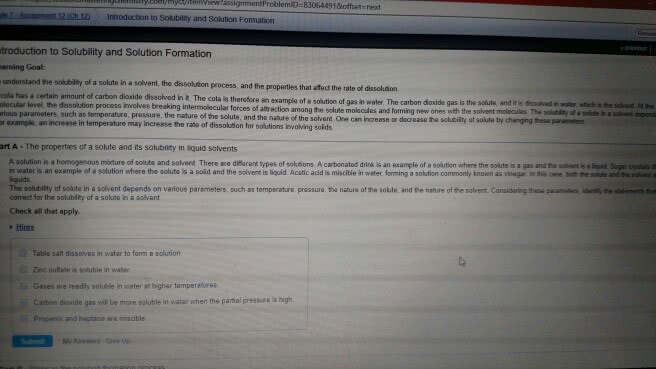CHEM 1111 Chapter 9: Ch. 9 Chemical Reactions in Aqueous Solutions
Document Summary
Solution: homogenous mixture of two or more substances, may be gaseous, solid, or liquid, solvent. Substance present in the largest amount: solute. Substance present in a smaller amount: example: if we dissolve a teaspoon of sugar in a glass of water. Electrolyte: substance that dissolves in water to yield a solution that conducts electricity, are necessary for transmission of electrical impulses when in body fluids. Critical to physiological processes such as nerve impulses and muscle contractions. Non-electrolyte: substance that dissolves in water to yield a solution that does not conduct electricity. *every water-soluble substance is either an electrolyte or non-electrolyte: difference between aqueous solutions is the presence or absence of ions. Dissociation: process by which an ionic compound, upon dissolution, breaks apart into its constituent ions. Ionization: process by which a molecular compound forms ions when it dissolves, examples: Acids > compounds that dissolves in water to produce hydrogen ions.


